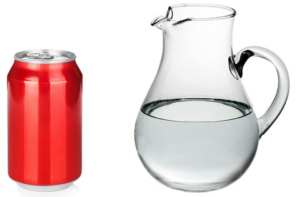Model Description
This is a demonstration of the basic principles open and closed systems. It reinforces the conservation of mass and energy. This demonstration should take 5-8 minutes.
Engineering Principle
Most students have a basic understanding of open and closed systems, but tend to get lost in the terminology. In order to assist in the student’s internalization of the concept of open vs. closed systems, this demonstration shows the differences between them in an easily understandable method.

What You Need
| Item | Quantity | Description/Clarification |
|---|---|---|
| Soda Can | 1 | It must not be opened. |
| Pitcher of Water | 1 | Half full |
How It’s Done
In Class: Highlight the conservation of mass:
For a closed system, there is no mass passing the boundary, so mass is conserved within the system. Using your un-opened soda can, rotate the can and ask the class what they expect to happen. Obviously, the contents will not spill out—the mass can not cross the boundary of the system.
Then open the can, and drink some soda. The mass is crossing the boundary of the system at the opening. At this point, question if the flow of mass across the boundary is steady, and how the term will be affected by the draining of the can.
From the conservation of mass, the conservation of energy can be interpreted. What will happen if we leave the un-opened cold soda in the warm classroom? The soda will get warmer, thereby showing that heat can transfer across the boundaries of a closed system.
If we open the cold soda, we notice that the can itself is cold on our hand and that the mass of soda going down our throat is cold. This shows that energy in an open system can be transferred with mass entering or exiting and / or through the boundary of the system.
Observations: Students should be able to observe how mass can not cross the boundary of the closed system (un-opened can) and how it is draining out of the open system (opened can). Students should also be able to recognize the heat transfer across the can itself (open or closed system) as well as with the mass as it drains out of the can (open system).
Additional Application: When introducing the 2nd Law of Thermodynamics, re-introduce the cold can of soda. In order to show how the 2nd Law predicts direction, ask which direction the heat must transfer. Will the opposite violate the 1st Law? Additionally, pour the contents of the soda into a pitcher of water. Will the soda and water unmix spontaneously?
